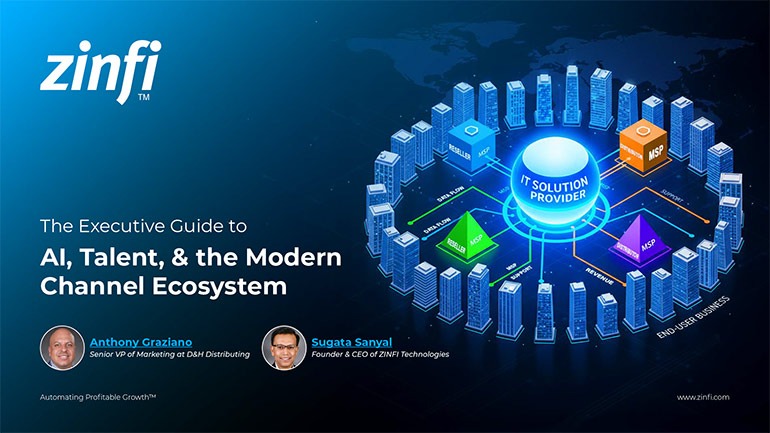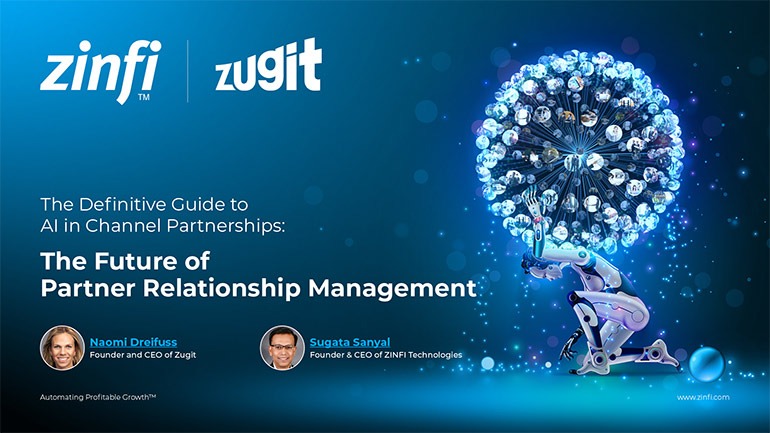Best Practices Articles

RevOps vs. PartnerOps: Unlocking Holistic Revenue Growth Through Strategic Alignment
In the relentless pursuit of sustainable growth, modern enterprises constantly seek innovative ways to optimize their go-to-market strategies. This quest has given rise to a new generation of operational frameworks: Revenue Operations (RevOps) and Partner Operations (PartnerOps). Both disciplines aim to accelerate revenue but focus on different sales and marketing ecosystem aspects. This distinction often raises questions about their relationship. Do they compete? Can one replace the other? Or do they work better as complementary forces that, when aligned, drive unprecedented growth?
The answer, for any forward-thinking organization, is unequivocally the latter. RevOps and PartnerOps are not rivals; they are strategic allies. Understanding their strengths, their unique areas of focus, and the profound harmony achieved through their integration is paramount for businesses aiming for holistic, predictable, and scalable revenue growth. This comprehensive guide will meticulously dissect each framework, highlight their core distinctions, and, most importantly, illustrate how their strategic alignment, particularly through the lens of Partner Relationship Management (PRM), forms the bedrock of a truly optimized revenue engine.
The Rise of Revenue Operations (RevOps): Unifying the Direct Revenue Engine
For decades, sales, marketing, and customer success functions often operated in isolated silos within organizations. Each department had its tools, processes, data, and, frequently, its own set of KPIs, leading to inefficiencies, miscommunications, and a fragmented customer experience. The handoffs between these teams were often clunky, resulting in lost leads, dissatisfied customers, and missed revenue opportunities.
Revenue Operations (RevOps) emerged as a strategic response to these challenges. It is a holistic operational framework designed to align and optimize all revenue-generating functions within an organization – typically sales, marketing, and customer success – under a unified strategy. The core philosophy of RevOps is to break down silos, standardize processes, leverage integrated technology, and provide unified data insights to create a seamless, end-to-end customer journey that drives predictable revenue.
Core Principles of RevOps:
- Alignment: Ensuring sales, marketing, and customer success teams share common goals, KPIs, and a unified understanding of the customer lifecycle.
- Automation: Leveraging technology to automate repetitive tasks, streamline workflows, and improve operational efficiency across all revenue functions.
- Analytics: Providing a single source of truth for revenue data, enabling comprehensive reporting, forecasting, and data-driven decision-making.
- Enablement: Equipping revenue teams with the right tools, training, and resources to perform effectively.
Key Pillars/Functions within RevOps:
While the exact structure can vary, RevOps typically encompasses the operational aspects of:
- Sales Operations (Sales Ops): Focuses on optimizing the sales process, managing the CRM, sales forecasting, territory planning, compensation management, and sales enablement tools.
- Marketing Operations (Marketing Ops): Manages the marketing technology stack, lead scoring and routing, campaign execution, marketing automation platforms, and marketing analytics.
- Customer Success Operations (CS Ops): Optimizes customer onboarding, adoption, retention, and expansion processes, managing customer success platforms and related data.
Benefits of a Robust RevOps Strategy:
- Increased Revenue Predictability: By aligning processes and data, organizations gain clearer insights into their revenue pipeline and can forecast more accurately.
- Improved Efficiency: Automation and standardized workflows reduce manual effort, eliminate redundancies, and free up revenue teams to focus on high-value activities.
- Enhanced Customer Experience: A seamless journey from initial marketing touchpoint to sales conversion and ongoing customer support leads to higher customer satisfaction and retention.
- Better Data & Insights: A unified data model provides a single source of truth, enabling more comprehensive reporting, deeper analytics, and more informed strategic decisions.
- More substantial Cross-Functional Alignment: Breaks down departmental silos, fostering collaboration and shared accountability for revenue goals.
- Faster Decision-Making: Real-time data and unified dashboards empower leaders to make quicker, more effective strategic and tactical adjustments.
Challenges in Implementing RevOps:
Despite its immense benefits, implementing RevOps is not without its hurdles:
- Organizational Resistance to Change: Breaking down long-standing departmental silos and shifting mindsets can be difficult.
- Complex Technology Integration: Unifying disparate sales, marketing, and customer success technologies requires significant effort and expertise.
- Data Governance & Quality: Ensuring consistent, clean, and accurate data across all systems is a continuous challenge.
- Finding the Right Talent: Building a skilled RevOps team with expertise across multiple domains can be difficult.
RevOps fundamentally transform how organizations approach direct revenue generation, creating a more cohesive, efficient, and data-driven engine for growth.
The Emergence of Partner Operations (PartnerOps): Optimizing the Indirect Revenue Engine
Just as RevOps brought order and alignment to direct revenue functions, Partner Operations (PartnerOps) has emerged as a specialized yet equally critical operational framework for the indirect revenue engine. Inspired by the success of RevOps, PartnerOps applies similar principles of alignment, automation, and analytics specifically to the management and optimization of channel partner ecosystems.
The core philosophy of PartnerOps is to transform the often-fragmented and manually intensive process of channel management into a predictable, scalable, and highly efficient revenue stream. It recognizes that channel partners are not just external entities but integral extensions of your sales, marketing, and service capabilities. Thus, they require a dedicated operational discipline to maximize their potential.
Core Principles of PartnerOps:
- Partner-Centricity: Placing the partner experience at the forefront, making it easy and profitable for partners to do business with the vendor.
- Automation of Channel Processes: Leveraging technology, particularly Partner Relationship Management (PRM) software, to automate repetitive tasks across the partner lifecycle.
- Channel Analytics & Insights: Providing deep, granular visibility into partner performance, program effectiveness, and channel ROI.
- Cross-Functional Channel Alignment: Ensuring that internal teams (channel sales, channel marketing, partner support) are aligned and collaborating effectively to support partners.
- Scalability: Designing processes and leveraging technology that efficiently supports a growing and diverse partner ecosystem.
ZINFI's PartnerOps Framework: A Holistic Blueprint for Channel Success
ZINFI, a leader in Unified Partner Management, champions a comprehensive PartnerOps Framework that provides a structured, eight-pillar blueprint for optimizing every phase of the partner journey. This framework ensures that a robust PRM solution is a tool and a technological engine powering a strategic, operational model for indirect revenue.
- Strategize:
- Purpose: Define clear, measurable objectives for your channel program, identify ideal partner profiles, segment your partner base, and establish the overall go-to-market strategy for your indirect channels. This foundational step aligns all future efforts with overarching business goals.
- PartnerOps plays a critical role here. The team analyzes the market with a focus on channel opportunities. They define partner tiers and set detailed performance targets for each segment. They also design incentive structures that support these goals. In essence, PartnerOps builds the strategic roadmap for your partner ecosystem.
- Recruit:
- Purpose: Attract, qualify, and onboard the right partners who align with your strategic objectives and possess the capabilities to represent and sell your products/services effectively.
- PartnerOps Role: Leverages PRM tools for automated partner application management, qualification workflows, and e-signature capabilities for contracts. It focuses on efficiently scaling recruitment efforts, ensuring a consistent and compliant onboarding experience globally, and identifying high-potential partners.
- Onboard:
- Purpose: Rapidly enable new partners, equipping them with the necessary knowledge, tools, and resources to become productive and generate revenue quickly.
- PartnerOps Role: Utilizes the PRM's integrated Learning Management System (LMS) to deliver tailored training paths, certifications, and essential resources. It automates welcome kits’ initial access provisioning and tracks partner progress through comprehensive curricula, significantly reducing time-to-first-deal.
- Enable:
- Purpose: Provide ongoing support, training, and resources to partners to ensure they remain knowledgeable, skilled, and effective throughout their lifecycle.
- PartnerOps Role: Manages the PRM's advanced content management system, ensuring partners can access the latest sales collateral, marketing assets, product information, technical documentation, and competitive intelligence. It also includes ongoing training updates and access to sales playbooks.
- Co-Market:
- Purpose: Empower partners to market your products and services, generating demand effectively and leads within local markets, aligning with your global brand messaging.
- PartnerOps Role: Leverages the PRM's Through-Channel Marketing Automation (TCMA) capabilities. This includes providing co-brandable marketing assets, customizable campaign templates, syndicated content, and managing Market Development Funds (MDF) requests, approvals, and proof-of-performance tracking.
- Co-Sell:
- Purpose: Facilitate seamless collaboration between your internal sales teams and partners to jointly pursue and close opportunities, ensuring proper attribution and minimizing channel conflict.
- PartnerOps Role: Manages the PRM's sophisticated deal registration and lead distribution functionalities. It automates lead routing, implements conflict resolution rules, tracks multi-partner attribution, and provides real-time visibility into the channel pipeline for partners and internal channel managers.
- Incentivize:
- Purpose: Motivate partners through clear, transparent, attractive compensation structures and incentive programs that reward desired behaviors and performance.
- PartnerOps Role: Automates complex incentive structures, including tiered commissions, rebates, and SPIFFs. It ensures transparent calculation and timely payouts across diverse geographies and partner types, fostering loyalty and driving specific sales outcomes.
- Accelerate:
- Purpose: Continuously monitor, analyze, and optimize channel performance, identifying opportunities for growth, addressing underperformance, and driving overall channel ROI.
- PartnerOps Role: Leverages the PRM's powerful analytics and reporting capabilities. It provides deep insights into partner performance, program effectiveness, and ROI. This data is crucial for identifying top performers, optimizing investments, predicting future trends, and continuously accelerating channel growth through data-driven decisions.
Benefits of a Robust PartnerOps Strategy:
- Maximized Channel ROI: By optimizing every stage of the partner lifecycle, PartnerOps ensures that channel investments yield the highest possible returns.
- Predictable Indirect Revenue: Streamlined processes and data-driven insights lead to more accurate forecasting for channel-generated revenue.
- Stronger Partner Relationships: A partner-centric approach, enabled by automation and transparency, fosters trust, loyalty, and deeper collaboration.
- Increased Partner Productivity: Empowered and enabled partners to sell and support your products more effectively.
- Scalable Channel Growth: PartnerOps provides the framework and technology to efficiently expand your partner network and penetrate new markets without overwhelming internal resources.
- Reduced Channel Conflict: Clear rules and automated processes for deal registration and lead management minimize disputes.
Challenges in Implementing PartnerOps:
Similar to RevOps, PartnerOps faces its own set of challenges:
- Organizational Silos (Internal): Internal channel teams often struggle to stay aligned with broader sales and marketing initiatives.
- Partner Adoption: Getting partners to actively use the PRM portal and adhere to new processes requires strong communication and a clear value proposition.
- Data Integration with CRM/ERP: Seamlessly connecting PRM data with core enterprise systems is crucial but can be complex.
- Complex Incentive Structures: Designing and automating fair and motivating incentive programs for diverse partner types can be challenging.
PartnerOps strategically optimizes your indirect sales channels to maximize their contribution to overall revenue—not just manage them.
The Core Comparison: RevOps vs. PartnerOps – Distinct Yet Interdependent
While both RevOps and PartnerOps are revenue-focused operational frameworks, their primary domains of influence and the "who" they serve are fundamentally different.
| Feature / Aspect | Revenue Operations (RevOps) | Partner Operations (PartnerOps) |
| Primary Focus | Optimizing the entire direct customer lifecycle (marketing, sales, CS). | Optimizing the entire indirect partner lifecycle (recruitment, enablement, channel sales/marketing). |
| Relationship Type | Direct, one-to-one with the end customer. | Indirect, one-to-many (vendor to partners, who then sell to end-users). |
| Key Goal | Maximize direct revenue predictability, efficiency, customer lifetime value. | Maximize channel partner performance, loyalty, indirect revenue predictability. |
| Core Processes | Lead-to-cash for direct sales, customer onboarding/retention. | Partner-to-revenue processes: recruitment, onboarding, enablement, co-marketing, co-selling, incentives. |
| Primary Technology | CRM, Marketing Automation Platform (MAP), Customer Success Platform. | Partner Relationship Management (PRM) software. |
| Data Managed | Customer data, direct sales pipeline, marketing campaign performance, customer service metrics. | Partner profiles, partner pipeline (deal registrations), MDF usage, training completion, partner engagement metrics. |
| Key Users | Internal sales, marketing, customer success, and operations teams. | Internal channel managers, channel marketing, partner operations, and external channel partners. |
| Revenue Stream | Direct revenue generated by internal teams. | Indirect revenue generated through channel partners. |
| Lead Management | Managing leads for internal sales teams, often from marketing efforts. | Managing leads for partners, distributing leads to partners, ensuring channel conflict avoidance. |
| Marketing | Direct-to-customer campaigns, brand building for end-users. | Through-channel marketing (enabling partners to market your products to their customers). |
| Support | Direct customer support and service. | Partner support (enabling partners to sell and support, and supporting partners themselves). |
| Visibility | Holistic view of direct sales pipeline and customer interactions. | Holistic view of partner pipeline, individual partner performance, and overall channel program effectiveness. |
The critical takeaway is that RevOps and PartnerOps are not mutually exclusive or competing frameworks. Instead, they are two distinct yet equally vital operational disciplines that address different but interconnected revenue engines. RevOps optimizes the direct path to the market, while PartnerOps optimizes the indirect path.
The Alliance: How RevOps and PartnerOps Work Together for Holistic Growth
The true power emerges not from choosing between RevOps and PartnerOps but from strategically aligning and integrating them. Most modern enterprises generate revenue through a mix of direct and indirect channels. A unified approach aligns these two engines. It prevents conflicts, boosts efficiency, and gives the organization a comprehensive view of overall business performance.
Here's how RevOps and PartnerOps create a powerful alliance:
- Unified Revenue View & Forecasting:
- Challenge: When companies don’t integrate direct and indirect revenue streams, they often forecast and report them separately. This disconnect creates an incomplete view of total revenue.
- Teamwork: PRM (PartnerOps) data regarding partner-sourced leads, deal registrations, and closed-won deals flows seamlessly into the CRM (RevOps). This allows for a consolidated view of the entire revenue pipeline – direct and indirect – enabling more accurate, holistic forecasting and resource allocation across all revenue-generating activities.
- Seamless Lead & Opportunity Handoffs:
- Challenge: Leads generated by marketing (RevOps) might be suitable for partners, and leads generated by partners (PartnerOps) might require direct sales involvement. Manual handoffs slow down processes and cause missed opportunities.
- Teamwork: Improves when you use integrated workflows. These workflows automatically route leads to the right team—direct sales via CRM or a specific partner via PRM. PRM’s deal registration prevents conflicts and gives direct sales teams visibility into partner-owned opportunities. This visibility inside the CRM promotes co-selling and stronger collaboration.
- Aligned Sales & Marketing Efforts:
- Challenge: Direct marketing campaigns might not align with channel marketing efforts, leading to inconsistent messaging or missed opportunities for partner leverage.
- Teamwork: RevOps ensures direct marketing and sales are aligned. PartnerOps ensures channel marketing and sales are aligned. When integrated, marketing teams can leverage customer insights from CRM to create highly effective campaigns that partners can deploy via PRM's TCMA tools. This ensures consistent brand messaging and maximizes demand generation across direct and indirect channels.
- Comprehensive Customer Journey Orchestration:
- Challenge: Companies fragment the customer journey when they fail to track direct and indirect interactions in a unified system.
- Teamwork: Whether a customer engages directly with your sales team (managed by CRM) or through a partner (managed by PRM), the integrated systems provide a complete historical view of all touchpoints. This ensures a consistent customer experience, regardless of the channel, and enables better customer success and retention efforts.
- Optimized Resource Allocation & ROI:
- Challenge: Without a unified view, comparing the ROI of direct sales investments versus channel investments is difficult.
- Teamwork: By combining analytics from both CRM and PRM, organizations can gain a holistic understanding of where revenue is coming from and which investments (in direct sales enablement, marketing campaigns, partner incentives, etc.) are yielding the highest returns. This allows for data-driven optimization of budgets across the entire revenue organization.
- Enhanced Accountability & Collaboration:
- Challenge: Siloed operations lead to a lack of shared accountability for overall revenue goals.
- Teamwork: A unified RevOps and PartnerOps approach fosters cross-functional collaboration. Channel managers, direct sales reps, and marketing teams work from a shared data set and common objectives, promoting a culture of shared success and accountability for the company's total revenue.
This integrated approach represents the pinnacle of modern revenue strategy, allowing enterprises to operate with unparalleled efficiency, predictability, and market reach.
Implementing a Unified Approach: Integrating RevOps and PartnerOps
Achieving the powerful alliance between RevOps and PartnerOps requires more than buying software; it demands a strategic initiative to integrate processes, technology, and people.
- Strategic Alignment at the Top:
- Unified Revenue Leadership: Appoint a Chief Revenue Officer (CRO) or a similar role responsible for direct and indirect revenue. This creates a single point of accountability and ensures strategic alignment from the executive level.
- Shared Goals & KPIs: Define common revenue goals and key performance indicators (KPIs) that span direct and indirect channels. This ensures everyone is working towards the same objectives.
- Cross-Functional Planning: Establish regular planning sessions involving leadership from sales, marketing, customer success, and channel teams to align strategies and identify interdependencies.
- Seamless Technology Integration:
- PRM as the Channel Hub: Your PRM software (e.g., ZINFI UPM) is the central hub for all partner-related data and processes.
- CRM as the Customer Hub: Your CRM remains the central system for managing direct customer interactions and sales.
- Bidirectional Data Flow: Implement robust, real-time, bidirectional integrations between PRM and CRM. This is the most critical technical step. Key data points include:
- Leads & Opportunities: Sync partner-registered leads/deals from PRM to CRM and vendor-generated leads to PRM for partner distribution.
- Accounts & Contacts: Ensure consistent customer and partner account/contact data across both systems.
- Product Catalog: Sync product information to ensure partners have accurate details for quoting.
- Sales Activities: Push partner sales activities from PRM to CRM for a complete customer view.
- Integration with MAP & ERP: Extend integrations to your Marketing Automation Platform (for lead nurturing and campaign execution) and ERP system (for order management, billing, and financial reconciliation).
- Data Governance: Establish clear policies and processes to ensure data quality, consistency, and compliance across all integrated systems.
- Organizational Alignment & Collaboration:
- Cross-Functional Teams: Create cross-functional teams or working groups that regularly collaborate on initiatives impacting direct and indirect channels (e.g., joint marketing campaigns and co-selling playbooks).
- Shared Training & Enablement: Develop training programs that educate both direct and channel teams on each other's roles, processes, and how to effectively leverage the integrated systems.
- Joint Sales & Marketing Playbooks: Create playbooks that outline how direct and indirect teams can collaborate on specific sales scenarios, ensuring smooth handoffs and maximizing deal potential.
- Communication Channels: Establish clear communication channels between direct and channel teams to facilitate collaboration and resolve issues quickly.
- Unified Reporting & Analytics:
- Centralized Reporting Platform: Leverage a business intelligence (BI) tool or a unified reporting dashboard that pulls data from CRM and PRM (and other relevant systems) to provide a comprehensive view of revenue performance.
- Holistic KPIs: Track KPIs that measure the combined impact of direct and indirect channels on overall revenue, profitability, and market share.
- Attribution Modeling: Implement advanced attribution models that accurately credit direct and indirect contributions to revenue, providing an accurate ROI for all revenue-generating activities.
Challenges of Unifying RevOps and PartnerOps
While the benefits are compelling, the journey to unify RevOps and PartnerOps can present significant challenges:
- Overcoming Organizational Silos: Deep-seated departmental structures and ingrained "territorial" thinking can be difficult to dismantle. It requires strong executive leadership and a cultural shift towards shared revenue accountability.
- Data Integration Complexity: Integrating disparate enterprise systems (CRM, PRM, MAP, ERP) is technically challenging. It demands expertise in data mapping, API management, and ensuring data quality and consistency across platforms.
- Change Management & Adoption: Implementing new processes and technologies requires significant change management efforts. Both internal teams and external partners must understand the "why" and be adequately trained and supported to adopt the new working method.
- Attribution Complexities: Developing robust attribution models that accurately credit direct and indirect contributions, especially in multi-touch, multi-channel customer journeys, is inherently complex and requires careful data analysis and agreement.
- Defining Clear Roles & Responsibilities: While collaboration is key, clearly defining roles and responsibilities between direct sales, channel sales, and channel operations is crucial to avoid overlap or gaps.
- Cost & Resource Investment: The initial investment in technology, integration, and change management can be substantial, requiring a strong business case and executive buy-in.
Despite these challenges, the strategic imperative for unified revenue growth invests in integrating RevOps and PartnerOps increasingly non-negotiable for enterprises seeking to maximize their market potential.
Conclusion
Pursuing predictable and scalable revenue growth in the modern enterprise is no longer a linear path. It's a complex, multi-faceted journey that demands strategic alignment across all revenue-generating functions. Revenue Operations (RevOps) provides the essential framework for optimizing direct sales, marketing, and customer success engines, driving efficiency and predictability in customer-facing interactions. Simultaneously, Partner Operations (PartnerOps), powered by sophisticated Partner Relationship Management (PRM) software like ZINFI's Unified Partner Management platform, is the specialized discipline that unlocks the immense potential of your indirect sales channels, fostering partner loyalty and accelerating channel-sourced revenue.
These two operational powerhouses are not in competition; they are inherently complementary. The true competitive advantage lies in their seamless integration. By unifying RevOps and PartnerOps, organizations can break down traditional silos, create a single source of truth for all revenue data, ensure consistent customer experiences across all channels, and gain holistic visibility into their entire revenue pipeline. This integrated approach enables more accurate forecasting, optimized resource allocation, and a truly synergistic go-to-market strategy that maximizes overall business impact.
While the journey to unify RevOps and PartnerOps presents its challenges, particularly in technology integration and organizational change management, the benefits of a cohesive, data-driven revenue engine are profound. For enterprises committed to achieving comprehensive, scalable, and predictable growth, the strategic alignment of RevOps and PartnerOps is not just a trend but the indispensable future of revenue operations. By mastering this union, businesses can ensure that every direct customer interaction and every partner-driven sale contributes optimally to their success.
Best Practices Guidebook
 Modernizing Channel Marketing: AI and Ecosystem Enablement Best Practices
Modernizing Channel Marketing: AI and Ecosystem Enablement Best PracticesDownload for FREE
 The Channel’s Shift to Partner-Led With AI Best Practices
The Channel’s Shift to Partner-Led With AI Best PracticesDownload for FREE
 Hyperscalers, ISVs, and AI: Shaping the Future of B2B Software Distribution
Hyperscalers, ISVs, and AI: Shaping the Future of B2B Software DistributionDownload for FREE
 Definitive Guide to a Partner Ecosystem-First Sales Strategy
Definitive Guide to a Partner Ecosystem-First Sales StrategyDownload for FREE
 The Partner-Led Digital and AI Transformation Best Practices
The Partner-Led Digital and AI Transformation Best PracticesDownload for FREE
 Startup Talent Recruitment: Hiring Missionaries, Not Mercenaries
Startup Talent Recruitment: Hiring Missionaries, Not MercenariesDownload for FREE
 The Future of Partner Relationship Management with AI in Partnerships
The Future of Partner Relationship Management with AI in PartnershipsDownload for FREE
 Cybersecurity for the 99%: Strategies from the Frontline
Cybersecurity for the 99%: Strategies from the FrontlineDownload for FREE
 Mastering Partner Relationships: A Strategic Approach to Business Growth
Mastering Partner Relationships: A Strategic Approach to Business GrowthDownload for FREE
 Mastering Partner Relationship Management: Keys to SaaS Channel Success
Mastering Partner Relationship Management: Keys to SaaS Channel SuccessDownload for FREE
 Navigating the AI Revolution: Guide for Partners in the Microsoft Ecosystem
Navigating the AI Revolution: Guide for Partners in the Microsoft EcosystemDownload for FREE
 Mastering the Modern Buyers Journey: Sales Leader’s Guide to AI & Engagement
Mastering the Modern Buyers Journey: Sales Leader’s Guide to AI & EngagementDownload for FREE










